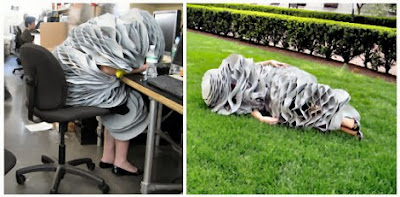It has been a big month for dreams in the news, with the New York Times and the New Yorker both weighing in on the subject. First up, the Times reports on a new theory advanced by Dr. Allan Hobson, who says that dreaming exists as a "warm-up" state for waking.
According to Dr. Hobson, dreaming is "a parallel state of consciousness that is continually running but normally suppressed during waking." But during sleep, dreaming comes to the forefront of the brain's activity, exercising it and "tuning the mind for conscious awareness."
Hobson has long been controversial for his insistence that dreams are the result of physiological process and have no inherent meaning. His new theory draws in part on studies of the brain activity of lucid dreamers--people who are aware that they are dreaming while still in the dream.
Brain wave patterns during lucid dreaming show a typical REM sleep pattern associated with dreaming, mixed in with patterns associated with waking awareness. The discovery of these "mixed states" give validity to the notion that we can hold two (or more?) different states of awareness simultaneously, and should give rise to some interesting research on altered states of consciousness.
Margaret Talbot also has a great recent article on nightmares in the New Yorker. The article focuses on imagery-rehearsal therapy, a technique where nightmare sufferers imagine how they would re-script a frightening dream, then "rehearse" it several times during the day and just before going to sleep at night.
Imagery-rehearsal therapy is surprisingly successful in many instances. Talbot speaks to a wide range of experts on dreams and nightmares, and the article gives a thorough, well-rounded picture of current thinking on why we have nightmares, and what to do about them.
These are exciting times to be a dream researcher, and an active dreamer! For nightmare sufferers, there have never been so many good options for coping with bad dreams. And for those of us who have occasional nightmares but aren't debilitated by them, we can extend our understanding of why these dreams come to us and what wisdom they might hold, like never before.
-SOURCE OF ORIGINAL ARTICLE-

